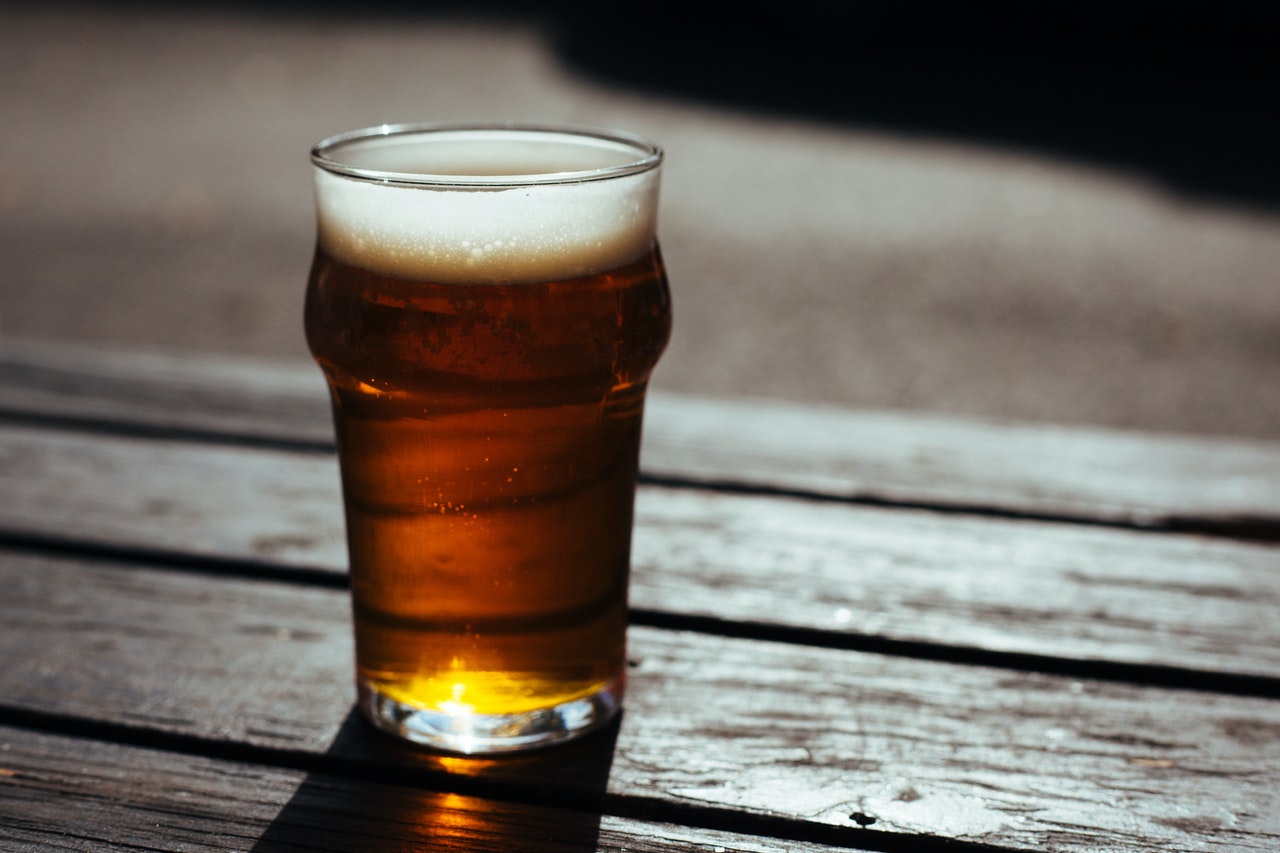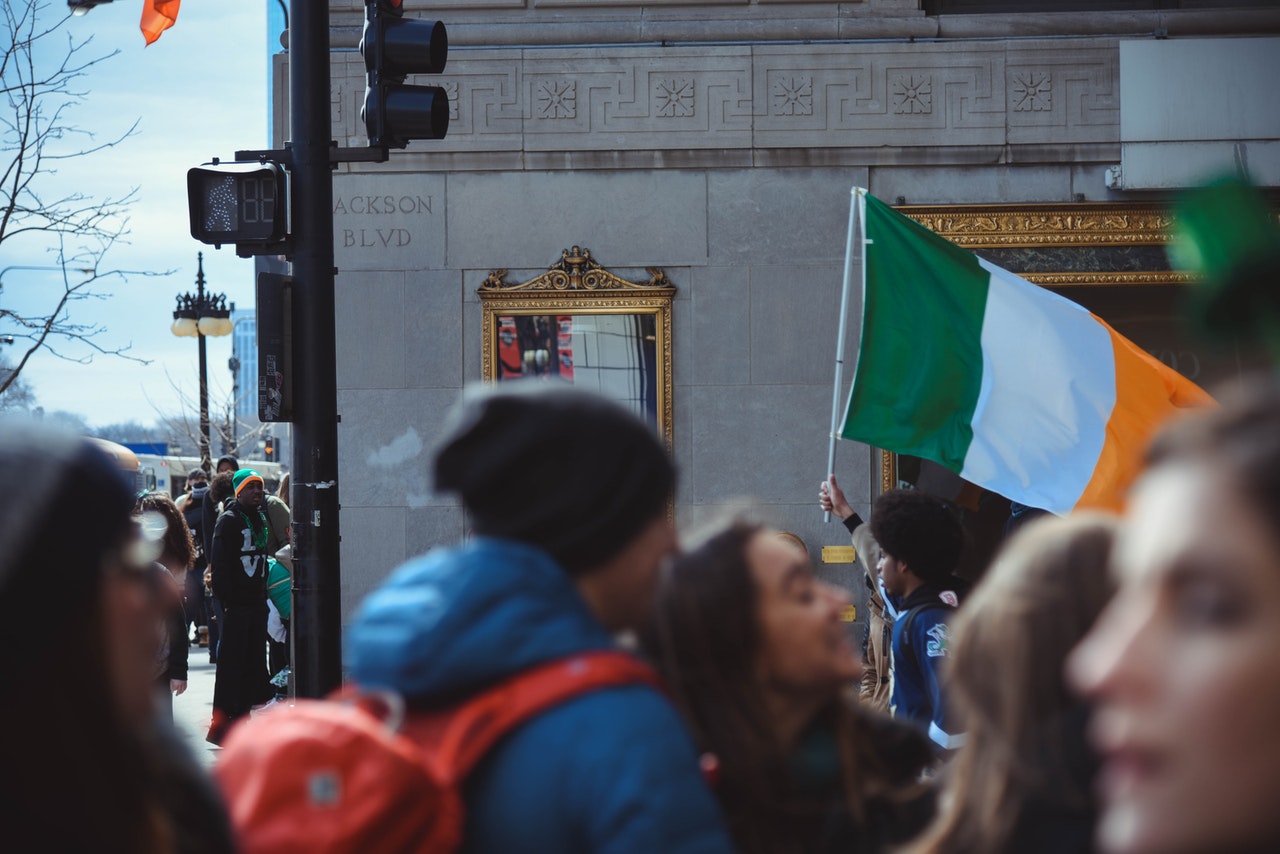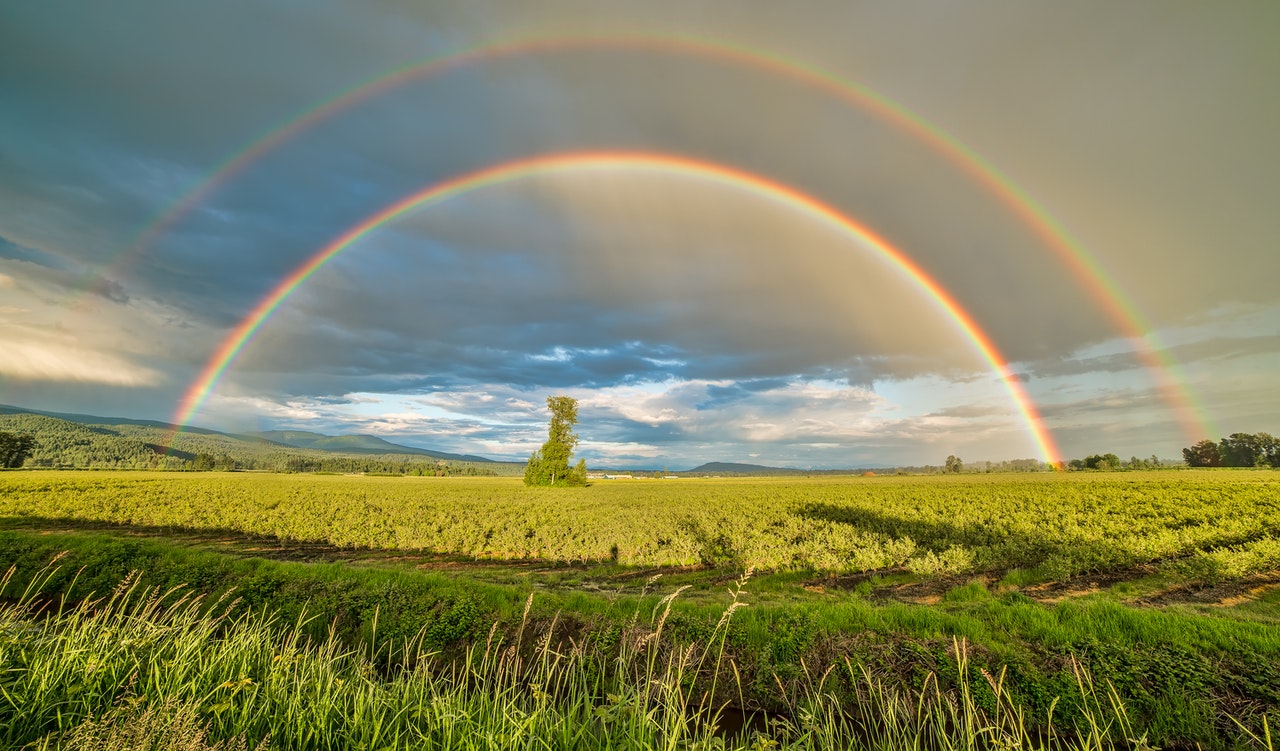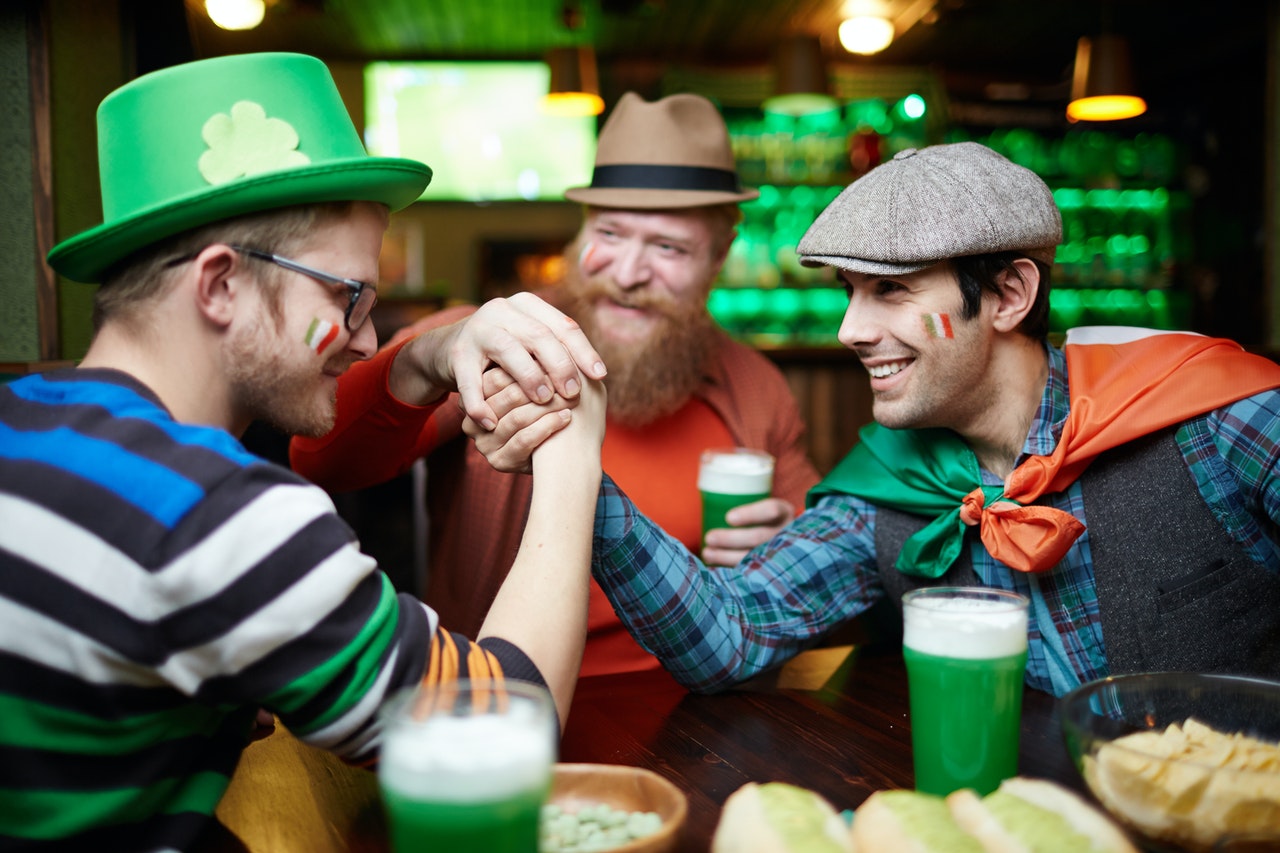
St. Patrick’s Day is a popular Irish celebration that is famed all over the world for its lively festivities and record-breaking consumption of alcohol. For the majority of people, the idea of St. Patrick’s Day is often associated with the image of four-leaf clovers and leprechauns.
Aside from its fun and modern traditions that make the day memorable, St. Patrick’s Day also plays an important role in Irish culture. Find out more about this Irish holiday with these St. Patrick’s Day facts.
- St. Patrick’s Day is annually celebrated on March 17.
- Over 50 different countries in the world celebrate this holiday.
- Saint Patrick lived from the year 385 to 461.
- An average of 2 million people celebrate St. Patrick’s Day in New York City.
- On average, a person will consume around 4.4 drinks of alcohol on St. Patrick’s Day.
- St. Patrick’s day is also known as the ‘Feast of Saint Patrick’.
- The holiday is considered a cultural and religious tradition celebrating Saint Patrick.
- The holiday was made an official Christian feast day during the early 17th century.
- St. Patrick’s Day celebrates the arrival of Christianity in Ireland.
- St. Patrick’s Day is typically celebrated with parades and festivals.
- Alcohol consumption is considered to be a major part of the celebration of St. Patrick’s Day.
- Saint Patrick was a Romano-British Cristian missionary and Bishop from 5th century Ireland.
- The holiday celebrates Saint Patrick’s death, not his birth.
- While it is considered a western holiday, many Eastern countries also celebrate St. Patrick’s Day.
- The holiday is often criticized mainly for its association with public drinking and disorderly conduct.
- St. Patricks Day is annually observed by the Catholic Church and the Anglican Communion.
- It is also observed by the Lutheran Church.
- Green is a traditional color worn when celebrating St. Patrick’s Day.
- St. Patrick’s Day is considered to be a public holiday in the Republic of Ireland.
- St. Patrick’s Day is included in the Gaelic calendar, also known as the Irish Calendar.
St. Patrick's day celebrants consume an average of 13 million pints of Guinness each year.
During St. Patrick’s Day, the world consumes over 13 million pints of Guinness alcohol in celebration of the holiday. Additionally, beer sales worldwide also increase by 174%, making it the busiest time of the year for several bars and pubs in the United States and Ireland.
On average, people spend around 6 billion dollars on alcoholic drinks during St. Patrick’s Day celebrations in the US alone. During this time, the most popular types of alcoholic drinks include different variants of beer, whiskey, and St. Patrick’s Day-themed cocktails.

On St. Patrick’s Day, banks, select stores, and businesses typically close.
In Ireland, most companies treat St. Patrick’s Day as a major holiday, which means that public establishments typically close to allow workers to indulge themselves in the celebration. Additionally, some businesses also host private company parties and events to celebrate the holiday – not just in Ireland, but in other countries as well.
There is a legend that states that shamrock leaves have different meanings to them.
According to many Irish legends, the 3 petals on the shamrock represent the 3 mysteries of the Holy Trinity associated with Celtic Pagans. It is believed that the 3 petals on the shamrock represented The Father, The Son, and The Holy Spirit in Christian religions.
Additionally, due to the shamrock being associated with Ireland, these plants are often given out by the Irish Prime Minister to the US President each year on St. Patrick’s Day. This practice began in 1952, when it was customary to place the plants inside a special Waterford crystal bowl with shamrocks on its outer design.
Old folklore stated that Saint Patrick came to Ireland because of a dream that he had.
In 408 AD, Saint Patrick experienced a dream in his sleep, which granted him the idea of escaping enslavement by running away and sailing away to Ireland. In this dream, Saint Patrick heard a voice that said he would surely return to Britain one day. With that, Saint Patrick immediately attempted to convince the sailors to let him onto their ship.
For a total of 3 days, Saint Patrick traveled by boat, until the ship was abandoned by the crew in France. From there, he continued the journey on foot for 28 days. During this time, Saint Patrick and the crew walked over 200 miles and eventually became reunited once again with his family.
The shortest recorded St. Patrick’s Day parade was held in a small Irish village.
In 1997, the small village of Dripsey in southern Ireland set a Guinness World Record for the shortest St. Patrick’s Day parade in the world. During this parade, the residents of the village and its visitors marched for a total of 77 feet, which was the distance between the sole two pubs found within the small village.
This parade was held annually in celebration of St. Patrick’s Day until 2007, due to the permanent closure of one of the pubs in the village. Since then, the village has been unable to hold any proper St. Patrick’s Day parade to commemorate the holiday. Definitely one of the sadder St. Patrick’s day facts.
Performing Irish step dancing is a common way of celebrating St. Patrick’s Day.
To commemorate St. Patrick’s Day, locals usually perform an Irish step dance as a common activity. The traditional Irish dance forms can also be divided into social and performance-type dances, where styles and movements have evolved throughout the years.
According to history, these dances also date back to over 2,000 years ago, introduced by the Celts who arrived in Ireland from Europe. Today, traditional Irish dances are carefully preserved and taught to younger generations to keep the tradition alive and represent one of the many beautiful forms of expression that Ireland has.

The associated color for St. Patrick’s Day was originally blue.
According to early depictions of Saint Patrick, images of his figure often portrayed him in blue colored garments instead of green. In Irish mythology, the significance of the color blue also relates to the sovereignty of Ireland, which was often portrayed by a woman in a blue-colored robe.
Over time, the blue color became tainted due to several political interferences which led to Ireland adopting the color green. Additionally, this was solidified after the shamrock was made a symbol of identity and rebellion for the Irish, which further expanded the use of the color green.
In 1962, Chicago dyed a river green in celebration of St. Patrick’s Day.
During his time as Chicago’s mayor between 1955 to 1976, Richard J. Daley proposed dyeing a small part of Lake Michigan green in celebration of St. Patrick’s Day. After much discussion, the plan was first executed in 1962 with a special formula used for the dye.
While the formula for this special dye is kept top secret from the public, sources have stated that this formula is environmentally-friendly and can be returned to normal after some time. During St. Patrick’s Day, the special dye is spread across the river by two motorboats, taking approximately 45 minutes for its full color to appear in the water.
‘Erin go Bragh’ is a popular phrase recited by Irishmen on St. Patrick’s Day.
Among the Irish, this term is often said out loud as a means of expression of one’s allegiance to the country of Ireland. In English, the phrase directly translates into “Ireland Forever” and is believed to have become anglicized around 1847.
Over the decades, the phrase has also been recited on several different occasions such as major football games and protest rallies to express their devotion to the country of Ireland. The phrase compares to other well-known nationalistic slogans such as ‘Vive la France’.
The real Saint Patrick was not known to be of Irish descent.
One of the little-known St. Patrick’s Day facts is that he may not even be Irish. According to old folklore, Saint Patrick was born around 450 AD, right after the Roman troops had already withdrawn from Britain.
Generally, historians believed that Saint Patrick was kidnapped by the Irish raiders and was later on sold as a slave to a Celtic priest in Northern Ireland. Additionally, there have also been mentions of Saint Patrick being a shepherd for six years before becoming a Christian missionary later on.
The first-ever St. Patrick’s Day parade was held in the United States and not in Ireland.
The first recorded St. Patrick’s Day parade was recorded to be held in 1762 in New York City. After this, the United States had experienced a steady growth of Irish immigrants during the middle of the 19th century.
Organized by early Irish settlers to the American colonies, this event mostly involved indentured servants. Because of this, it also led to the widespread annual St. Patrick’s Day celebrations all over the United States.

Shamrocks are also considered to be the national flower of Ireland.
The shamrock is considered a type of trefoil plant which has been labeled as the unofficial flower of the country of Ireland for several centuries. According to Irish legends, Saint Patrick once used this plant as an educational symbol when explaining the Holy Trinity to those who did not believe in Christianity.
Using this example was considered to be a popular means of explaining the religion to non-Christians. Today, the shamrock is now one of the most popular symbols associated with St. Patrick’s Day due to Saint Patrick’s connection to this particular plant.
The Pot ‘O Gold coin toss is a common game played to celebrate St. Patrick’s Day.
When it comes to fun and games, St. Patrick’s Day is full of fun activities that can be played by both children and adults. Among the many popular games to play on this Irish holiday, the Pot ‘o Gold coin toss game is considered to be one of the most popular, especially for younger celebrants.
The game is played by setting a small bucket or container on the floor, with all players given a few plastic coins to throw. Each player will take turns tossing the coins into the container, going further from the bucket for each toss. The player with the most successful throws at the end of the game is considered the winner.
Shamrock shakes are also considered to be a popular drink consumed on St. Patrick’s Day.
The Shamrock Shake is a seasonal dessert milkshake drink made with green mint flavoring. In some food service locations such as McDonald’s and many other cafes, the drink is available for the entirety of March in the United States, Ireland, and Canada.
The origins of the beverage were introduced in 1970 by a man named Rogers Merchandising in Chicago, USA. Originally, it was stated that the drink was made with a lime or lemon flavor mixed with vanilla-flavored ice cream, which was later on changed into a mint-flavored drink to match the color of the finished product.
The odds of being able to find a four-leaf clover is 1 in 10,000.
The famous four-leaf clover is considered to bring great luck to those who find one in a field of shamrocks. However, this is considered to be quite difficult as the odds of finding one are considered to be a rare occasion.
According to some beliefs, the four-leaf clover symbolizes faith, hope, love, and luck. Additionally, Ireland is also believed to have more four-leaf clovers than any other place in the world.
In old folklore, Saint Patrick was known to have chased away snakes in Ireland.
According to old Irish legends, Saint Patrick chased away the snakes found in Ireland into the sea. The legends also stated that this was due to him being attacked by a snake during his 40-day fasting on top of the hill.
However, this tale is largely believed to be false, because there were no snakes found in Ireland at all. Additionally, because of this owning a pet snake became a symbol of status within the country as these creatures cannot be naturally found in Ireland.

Many people dress up as leprechauns and traditional Irish clothing to celebrate St. Patrick’s Day.
In many Irish legends and stories, the leprechaun was considered to be cranky little tricksters who often mended the shoes of Irish fairies in their time. These creatures also typically live alone and are often associated with gold and other riches.
However, in the Americanized version of these legends, leprechauns are seen as good-natured and friendly creatures that will grant you their pot of gold when you spot them at the end of a rainbow. Additionally, some stories also state that if you capture a leprechaun, the creature can grant you a total of 3 wishes.
The associated color for St. Patrick’s Day is green because of Ireland’s nickname.
Ireland is also famously known by its nickname, the ‘Emerald Isle’ which was granted to it due to its luscious green landscapes. This type of vegetation is also thanks to the amount of rain that the country receives throughout the year.
Additionally, Irish soil is also known to be quite fertile, with low central plains surrounded by mountains near its coasts. The western coastline of Ireland is also considered rugged with several islands, peninsulas, bays, and headlands all over its surrounding area.
The first celebration of St. Patrick’s Day in the United States was in 1737.
On March 17, 1737, the first-ever St. Patrick’s Day celebration in the United States was held in the city of Boston, Massachusetts. On this day, more than 2 dozen Presbyterians from northern Ireland gathered in the city to honor the St. Patrick’s Day celebration and Saint Patrick himself.
However, some historians have also stated that the state of Florida might have been the first to celebrate the Irish holiday, holding the largest St. Patrick’s Day parade in 1762. Today, the oldest known Irish organization in the United States continues to hold annual dinner parties on St. Patrick’s Day in honor of the Irish holiday.
St. Patrick’s Day was considered to be a minor religious holiday until the 1970s.
Until the 1970s, celebrations for St. Patrick’s Day were commonly limited to family parties and a day of feasting. However, this changed over time, eventually becoming a large celebration with parades.
St. Patrick’s Day also became known for its large drinking parties and introducing many other countries to old Irish traditions.
Common good luck charms for St. Patrick’s Day include a horseshoe and many other trinkets.
According to several Irish legends, there are several items and trinkets you can keep with yourself to attract good luck. Common good luck charms include a horseshoe, a four-leaf clover, a lucky rabbit’s foot, and a sprig of heather.
Additionally, the reason why the horseshoe is considered to bring good luck is due to the belief that being a blacksmith brought luck in old times. Due to its ability to withstand fire and heat, iron was also considered a lucky material. Similarly, the ‘U’ shape of the horseshoe is said to ward out evil from you and your home.

A common stereotype for the Irish on St. Patrick’s Day is classifying them as drunkards.
The tradition of drinking on St. Patrick’s Day first began as a tribute to the death of Saint Patrick on his anniversary. In old traditions, Irishmen and those others that would celebrate the holiday would often hold a great feast served with alcohol.
Saint Patrick is not an actual saint.
Despite the legends and stories regarding the famous icon, there are no mentions of Saint Patrick being canonized by the Catholic church and is considered to be a saint solely in name. Additionally, this information is supported by records stating that there was no form of formal canonization process in the Catholic church during its first millennium until around the 12th century.
It is also stated that Saint Patrick received his title as a saint in name due to popular acclaim which was later on approved by a bishop. Saint Patrick also became notable due to him being the first major figure to reject the concept of slavery. How’s that for surprising St. Patrick’s Day facts?
Beer is recorded to be the most consumed beverage on St. Patrick’s Day.
In commemoration of the Irish holiday, the famous St. Patrick’s Day beer is also considered to be a popular choice since its first introduction in 1914.
Contrary to popular belief, this innovation is recorded to be an American-born tradition that uses blue coloring to accomplish the final green product. Among the several brands of beer available, Guinness is considered to be one of the most popular choices for beer drinkers that are celebrating St. Patrick’s Day.
Kissing someone Irish is considered to grant you good luck on St. Patrick’s Day.
One of the most popular and famous phrases associated with modern celebrations of St. Patrick’s Day is the phrase ‘Kiss Me, I’m Irish’. This phrase is a popular reference to the Blarney Stone legend, which states that those who kiss the stone will be blessed with good luck and charisma.
Additionally, Irish legends state that the stone can be found embedded in the parapet of the Blarney Castle located in Cork, Ireland. Over time, this belief evolved into generalizing that those with Irish blood are considered to be good luck. With that, the legend states that kissing an Irish person will grant you good luck for some time.
Watching sports events is a popular pastime during St. Patrick’s Day.
In Ireland, sports play an important role in local culture and society, with association football as the most popular sport.
During St. Patrick’s Day, the majority of celebrants will often have a glass of beer at their local pub while watching some sort of sporting event on the television and cheering teams on. This occurrence is also considered to be one of the most popular ways to socialize with new people while celebrating this Irish holiday.

Over 34.7 million citizens in the United States are registered with Irish ancestry.
This is roughly equivalent to about 10% of the total population of the United States as of 2017. The state considered to have the largest population of Irish-American citizens is the state of Massachusetts where 21.6% of those with Irish ancestry reside.
Additionally, the town of Scituate is also famous for being the most populated area for Irish-Americans which eventually brought the town to fame among Irishmen. Among those who have identified as Irish or are of Irish descent, the majority of this population consists of Scottish-Irish rather than Irish-Catholics.
The Irish leprechaun is believed to have been based on Celtic fairies.
In old Irish legends, the leprechaun was classified as a type of solitary fairy and are typically described as small bearded men who wear a coat and a hat. In many versions of the legends, the Irish leprechaun was known to partake in mischief and was considered to be quite wealthy.
According to historians, the Irish leprechaun was based on stories of gods who took on the form of fairies during their visit to Earth. In other versions of the story, these leprechauns were considered to be taller than humans and mostly wore red clothing such as their signature coats and hats.
Corned beef and cabbage are considered as staple food consumed during St. Patrick’s Day.
Despite this dish being a popular staple among Irishmen during St. Patrick’s Day celebrations, the dish is considered to be rooted in American culture. Traditionally, convened beef would be packed and stored in barrels along with coarse grains of salt around the time of the 12th century.
When salting beef had become a major industry for Irish port cities, Ireland began exporting cured beef to countries all over the world, including the United States. Over time, corned beef was popularly served with potatoes and different types of vegetables.
Baked goods are often a popular choice for meals on St. Patrick’s Day.
Among the many baked goods served in Ireland, Shamrock bread is considered one of the most popular pastries sold during St. Patrick’s Day. Commonly, the bread is also known as Irish Soda Bread, which is known for not using any yeast in its recipe. Instead, the pastry uses baking soda and buttermilk.
The taste of the bread is considered quite mild and a bit similar to the flavor of a biscuit and is typically eaten with spreads such as butter or jam. Additionally, meat and vegetables are also common fillings used and paired with the bread during meals.
Was this page helpful?
Our commitment to delivering trustworthy and engaging content is at the heart of what we do. Each fact on our site is contributed by real users like you, bringing a wealth of diverse insights and information. To ensure the highest standards of accuracy and reliability, our dedicated editors meticulously review each submission. This process guarantees that the facts we share are not only fascinating but also credible. Trust in our commitment to quality and authenticity as you explore and learn with us.
